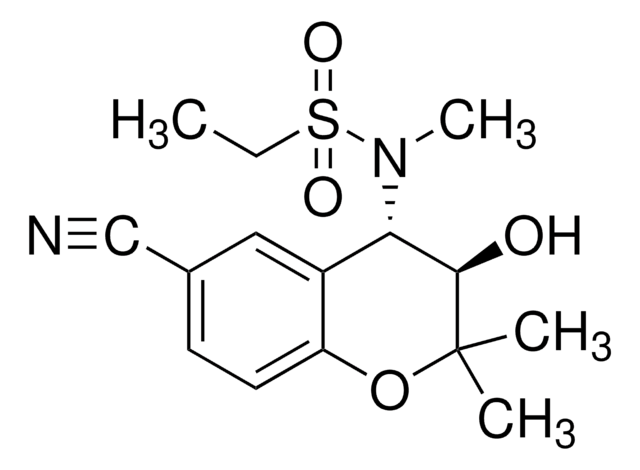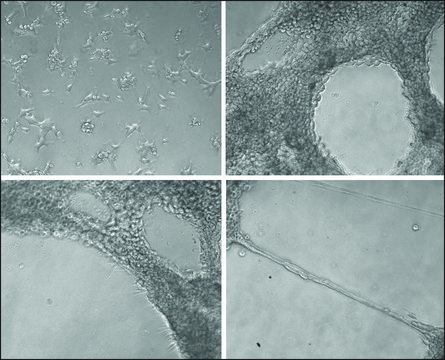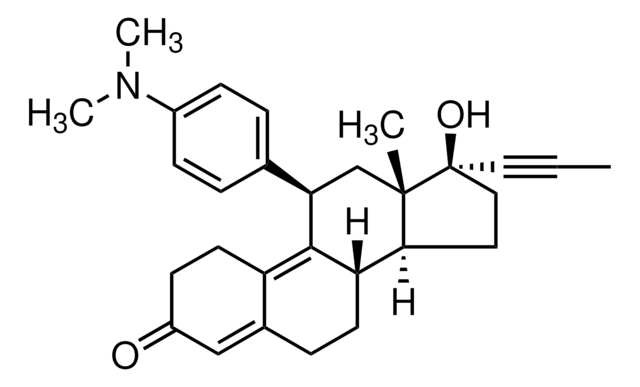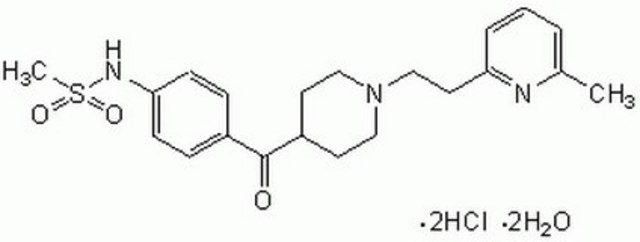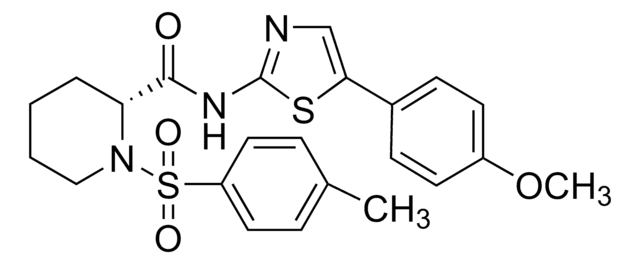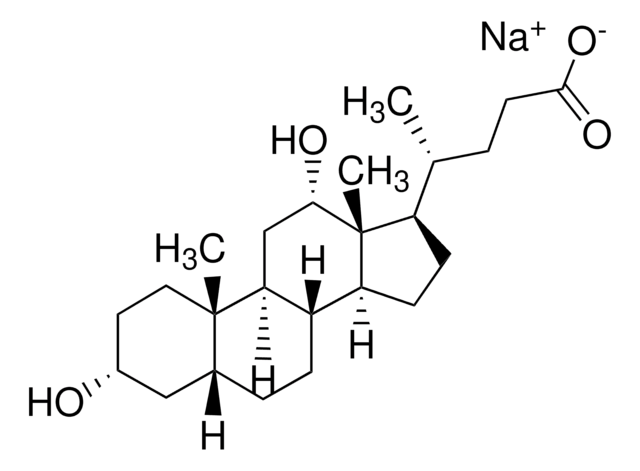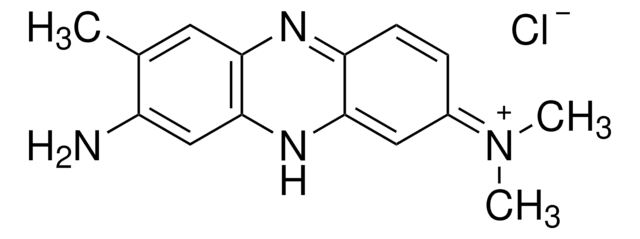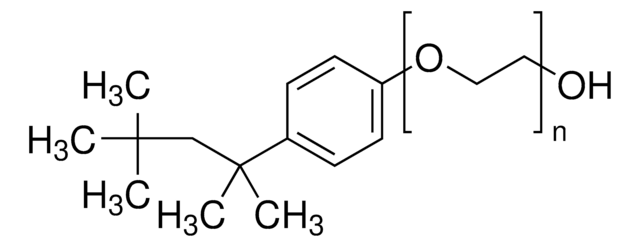SML2354
HMR-1556
≥98% (HPLC)
别名:
(3R,4S)-(+)-N-[3-Hydroxy-2,2-dimethyl-6-(4,4,4,-trifluorobutoxy)chroman-4-yl]-N-methylmethanesulfonamide, Chromanol HMR 1556, HMR 1556, HMR1556, N-[(3R,4S)-3,4-Dihydro-3-hydroxy-2,2-dimethyl-6-(4,4,4-trifluorobutoxy)-2H-1-benzopyran-4-yl]-N-methylmethanesulfonamide
登录查看公司和协议定价
所有图片(1)
About This Item
推荐产品
方案
≥98% (HPLC)
表单
powder
旋光性
[α]/D +2 to +3.5°, c = 0.1 in methanol
颜色
white to beige
溶解性
DMSO: 2 mg/mL, clear
储存温度
2-8°C
SMILES字符串
CC1([C@@H]([C@H](C2=CC(OCCCC(F)(F)F)=CC=C2O1)N(C)S(C)(=O)=O)O)C
InChI
1S/C17H24F3NO5S/c1-16(2)15(22)14(21(3)27(4,23)24)12-10-11(6-7-13(12)26-16)25-9-5-8-17(18,19)20/h6-7,10,14-15,22H,5,8-9H2,1-4H3/t14-,15+/m0/s1
InChI key
SRZRLJWUQFIZRH-LSDHHAIUSA-N
生化/生理作用
HMR-1556 is a potent and selective blocker of the heteromeric KCNQ1-KCNE1 (KvLQT1-MinK) voltage-gated channel-mediated slowly activating K+ current (IKs IC50 = 120 nM in hKCNE1-transfected Xenopus oocytes; little or no inhibition of Herg, Kv1.3 (KCNA3), Kv1.5 (KCNA5), Kir2.1 (KCNJ2), HCN2 (BCNG2) current in respective oocyte transfectants). HMR-1556 is more potent than chromanol 293B (IKs IC50 = 34 nM and 2.1 μM, respectively; guinea pig ventricular myocytes), being inefficient against L-type Ca2+ channel or rapidly delayed & inward rectifier currents (IKr & IK1) in guinea pig ventricular myocytes, nor transient & sustained outward currents, I(to) & I(sus), in rat ventricular myocytes.
Potent and selective blocker of the heteromeric KCNQ1-KCNE1 (KvLQT1-MinK) voltage-gated channel-mediated slowly activating K+ current (Iks).
储存分类代码
11 - Combustible Solids
WGK
WGK 3
闪点(°F)
Not applicable
闪点(°C)
Not applicable
法规信息
新产品
历史批次信息供参考:
分析证书(COA)
Lot/Batch Number
Jie Wu et al.
Scientific reports, 8(1), 3129-3129 (2018-02-17)
Congenital long QT syndrome (LQTS) caused by compound mutations is usually associated with more severe clinical phenotypes. We identified a LQTS family harboring three compound mutations in different genes (KCNQ1-R174C, hERG-E1039X and SCN5A-E428K). KCNQ1-R174C, hERG-E1039X and SCN5A-E428K mutations and/or relevant
C Lerche et al.
British journal of pharmacology, 131(8), 1503-1506 (2001-01-05)
Slowly activating I:(Ks) (KCNQ1/MinK) channels were expressed in Xenopous: oocytes and their sensitivity to chromanols was compared to homomeric KCNQ1 channels. To elucidate the contribution of the ss-subunit MinK on chromanol block, a formerly described chromanol HMR 1556 and its
Bence Hegyi et al.
Proceedings of the National Academy of Sciences of the United States of America, 115(13), E3036-E3044 (2018-03-14)
Heart failure (HF) following myocardial infarction (MI) is associated with high incidence of cardiac arrhythmias. Development of therapeutic strategy requires detailed understanding of electrophysiological remodeling. However, changes of ionic currents in ischemic HF remain incompletely understood, especially in translational large-animal
George P Thomas et al.
Journal of cardiovascular pharmacology, 41(1), 140-147 (2002-12-25)
The slowly activating delayed rectifier potassium current (IKs) contributes prominently to ventricular repolarization of the cardiac action potential. Development of a selective IKs blocker is important for the elucidation of the physiologic and pathophysiologic relevance of IKs and the development
James Winter et al.
Frontiers in physiology, 9, 16-16 (2018-02-08)
Rationale: Arrhythmogenic cardiac alternans are thought to be an important determinant for the initiation of ventricular fibrillation. There is limited information on the effects of sympathetic nerve stimulation (SNS) on alternans in the intact heart and the conclusions of existing
我们的科学家团队拥有各种研究领域经验,包括生命科学、材料科学、化学合成、色谱、分析及许多其他领域.
联系技术服务部门